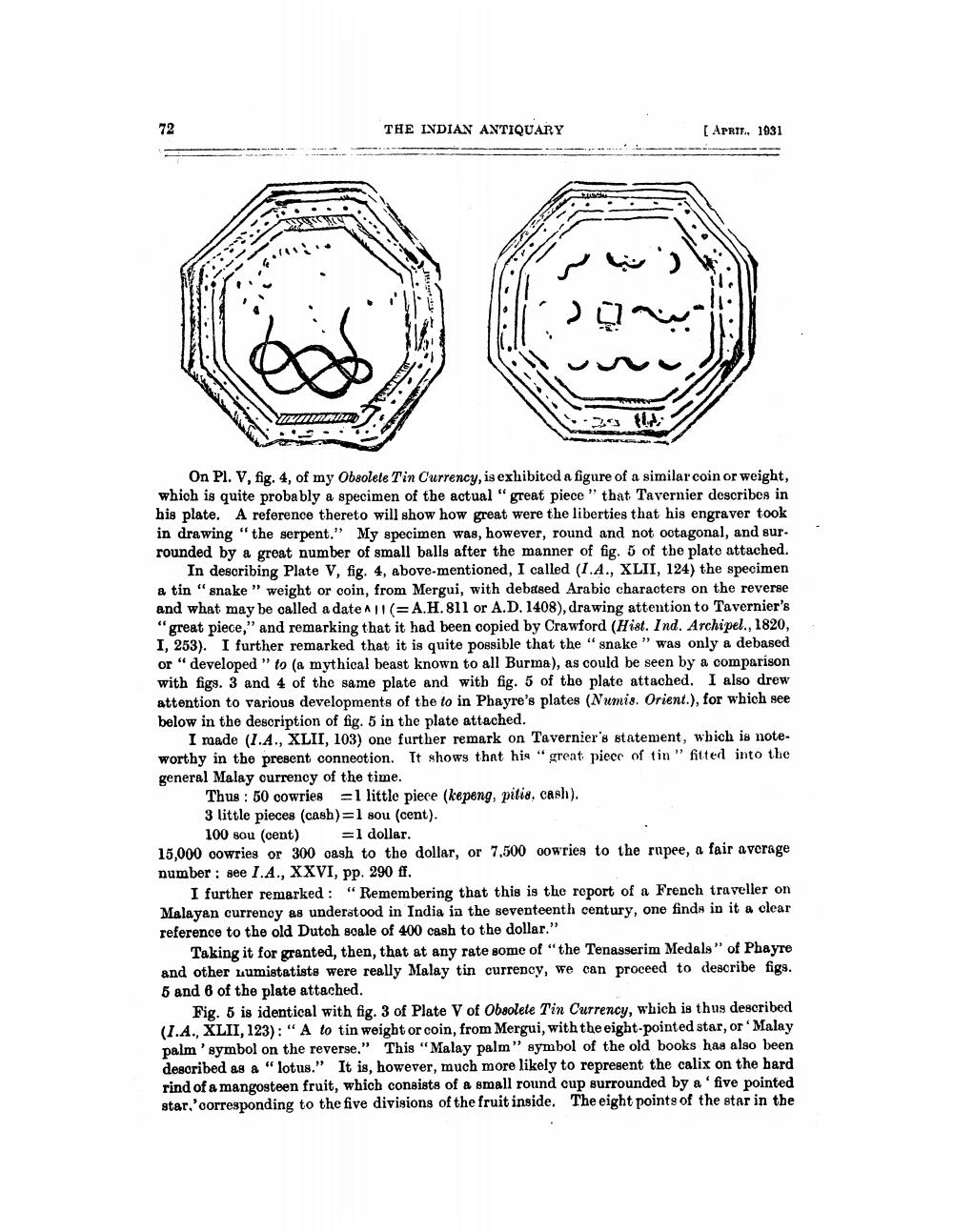________________
THE INDIAN ANTIQUARY
[APRIE, 1931
On Pl. V, fig. 4, of my Obsolete Tin Currency, is exhibited a figure of a similar coin or weight, which is quite probably a specimen of the actual "great piece" that Tavernier describes in his plate. A reference thereto will show how great were the liberties that his engraver took in drawing "the serpent." My specimen was, however, round and not ootagonal, and sur. rounded by a great number of small balls after the manner of fig. 5 of the plate attached.
In describing Plate V, fig. 4, above-mentioned, I called (1.A., XLII, 124) the specimen a tin "snake" weight or coin, from Mergui, with debatsed Arabic characters on the reverse and what may be called a datell(= A.H.811 or A.D. 1408), drawing attention to Tavernier's "great piece," and remarking that it had been copied by Crawford (Hist. Ind. Archipel., 1820, I, 253). I further remarked that it is quite possible that the "snake” was only a debased or “developed " to (a mythical beast known to all Burma), as could be seen by a comparison with figs. 3 and 4 of the same plate and with fig. 5 of the plate attached. I also drew attention to various developments of the to in Phayre's plates (Numis. Orient.), for which see below in the description of fig. 5 in the plate attached.
I made (1.A., XLII, 103) one further remark on Tavernier's statement, wbich is noteworthy in the present connection. It shows that his "great piece of tin" fitted into the general Malay currency of the time.
Thus: 50 cowries = 1 little piece (kepeng, pitis, cash). 3 little pieces (cash)=1 sou (cent).
100 sou (cent) =1 dollar. 15,000 cowries or 300 cash to the dollar, or 7,500 oowries to the rapee, a fair average number : see I.A., XXVI, pp. 290 ff.
I further remarked : "Remembering that this is the report of a French traveller on Malayan currency as understood in India in the seventeenth century, one finds in it a clear reference to the old Dutch goale of 400 cash to the dollar."
Taking it for granted, then, that at any rate some of "the Tenasserim Medals" of Phayre and other Lumistatists were really Malay tin currency, we can proceed to describe figs. 5 and 6 of the plate attached.
Fig. 5 is identical with fig. 3 of Plate V of Obsolete Tin Currency, which is thus described (1.A., XLII, 123): "A to tin weight or coin, from Mergui, with the eight-pointed star, or Malay palm symbol on the reverse." This "Malay palm" symbol of the old books has also been described as a "lotus." It is, however, much more likely to represent the calix on the hard rind of a mangosteen fruit, which consists of a small round cup surrounded by a 'five pointed star,'corresponding to the five divisions of the fruit inside. The eight points of the star in the




